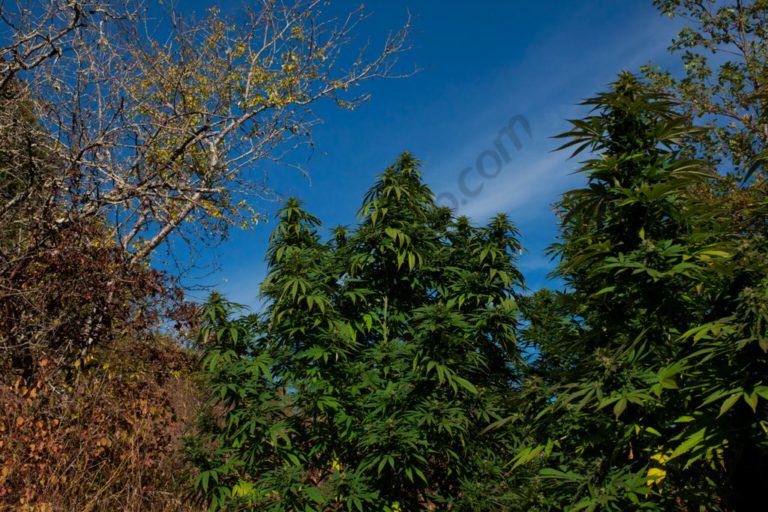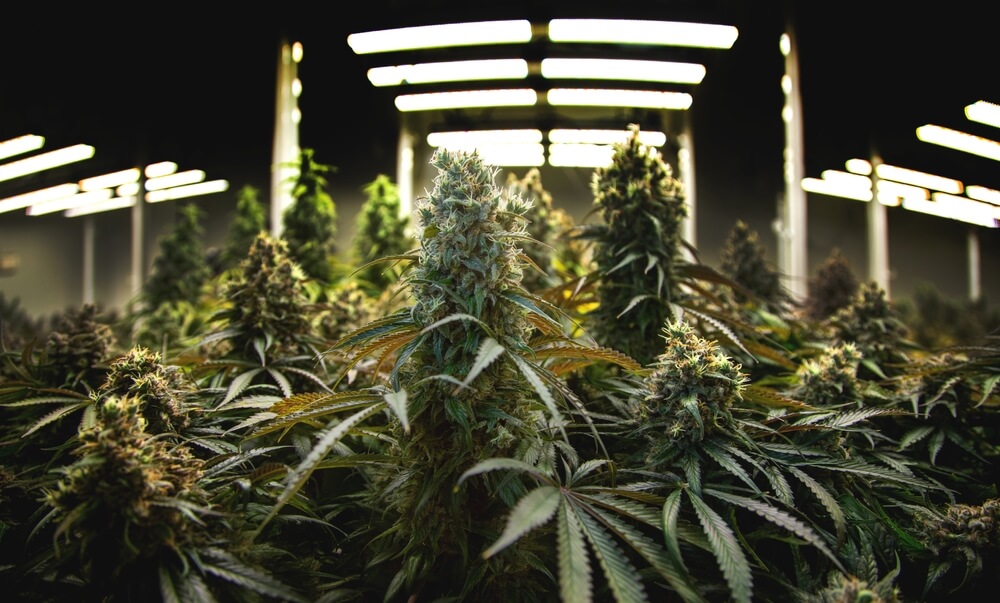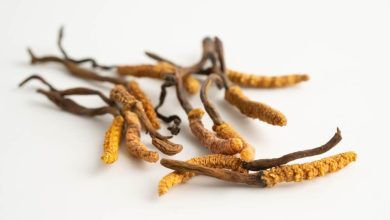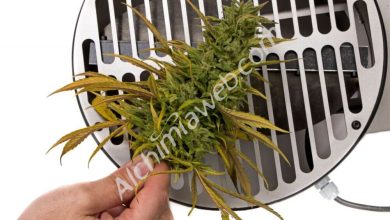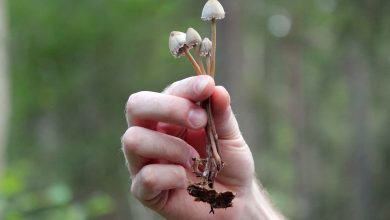How to prepare your outdoor cannabis crop- Alchimia Grow Shop
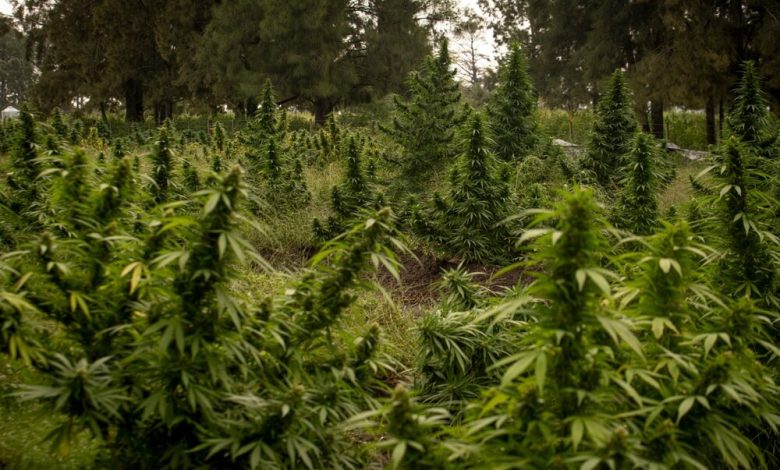
Growing cannabis outdoors offers an enriching experience for gardening enthusiasts and cannabis lovers. They have the opportunity to provide themselves with top-quality flowers and the personal satisfaction that this entails. In addition to being a more economical and sustainable option than growing indoors, the natural environment can enhance the characteristics of the plants, such as their terpene profile.
However, the crop’s success depends on multiple factors that you should not take lightly if you want to harvest your plants without any problems. Below, we will explore the most relevant aspects you should consider when preparing your outdoor cannabis crop, from the location of the plants to training techniques or irrigation systems. The best way to ensure a successful crop is to start on the right foot and without making mistakes!
Sun exposure and crop location
The environment where you set up your grow room is crucial for the healthy development of your plants. The amount of sunlight, protection from the wind and discretion are determining factors for a successful grow. It is important to plan the location considering the needs of the plant and the climatic conditions of the environment:
- Sun Exposure: Cannabis is a plant that requires abundant sunlight to develop properly. It is essential to choose a location where the plants receive at least 6-8 hours of direct light per day. In fact, with cannabis, it is often said that the more hours of direct light per day, the better the plant will develop and the more generous the harvest will be.
- Wind protection: Very windy areas can damage plants, especially when they are specimens with little flexibility in their branches. If possible, and if necessary, it is recommended to place natural barriers (bushes) or structures such as fences to protect the crop from strong air currents.
- Discretion: If the crop is in an area where privacy is important, consider using companion plants or natural screens to hide the plants. In addition, techniques such as LST (Low-Stress Training) or SCROG (Screen of Green) often work perfectly to control the height of the plants so that they do not, for example, exceed a fence or enclosure and can be seen from outside.
- Physical barriers: Protect plants from animals and potential intruders by using fences or protective mesh. If you are going to grow on your balcony or in your garden, this may not be the most important factor, but it is something to keep in mind in the case of guerrilla crops, where it is not unusual to find plants destroyed by animals such as wild boars, moles or rabbits.
Guerrilla growing cannabis
Cannabis guerrilla growing is the only option for many users to grow their own pot. In this article we tell you how to successfully harvest your guerrilla-grown plants with minimal risk by just following a few simple steps.
Choosing between planting in pots or directly in the ground depends on several factors, such as the space available, the quality of the soil, and the possibility or need to move the plants. Both options have their advantages and disadvantages.
- Pots: These offer mobility and control over the growing medium. They are ideal if the soil is of poor quality or if you want to protect the plants from adverse weather conditions. They are also the option to choose if you know that at some point in the grow you will have to move the plants to another location, for example, if you know that in spring you have more hours of sun in a particular area, but that this will change in autumn. Some growers even move their plants at night to make them less accessible and prevent theft. However, unless you use large containers, you will have to water more often if you grow in pots than you would if you grow in the ground.
- Directly in the ground: It allows for more extensive root development, which usually results in larger, healthier, and, above all, more productive plants. It is the most natural option but requires that the soil be well prepared and have a minimum quality. If you want huge yields and the size of your plants will not be a problem, seriously consider growing in open ground. A widely used option is to dig holes of about 100L and fill them with the best quality substrate so that in addition to unlimited space for the roots, the plants will enjoy a good amount of substrate specially prepared for them.
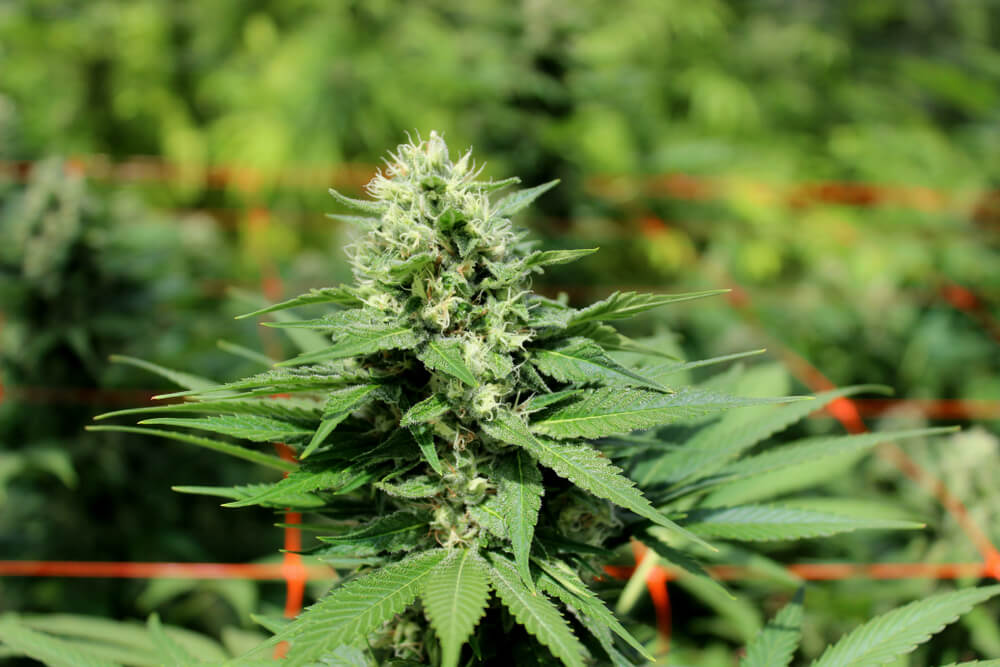
Substratum
The substrate is the medium where the roots of your plants will grow and absorb nutrients. Choosing the right substrate is essential to ensure good nutrition, aeration, and water retention, aspects that will directly affect the development of your plants.
- Living Soil: Contains beneficial microorganisms that improve soil health and plant nutrition. It is low maintenance but does require prior preparation, usually by adding organic matter and microbial life.
- Super Soil: Similar to Living Soil, but enriched with nutrients to cover the needs of the plant throughout its cycle, whether we are talking about organic or mineral nutrients. Like the previous one, Super Soil is an excellent option if you want to forget about preparing liquid nutrients throughout the crop since you basically only have to use water to water your plants.
- Conventional soil: This can be used without any problems, but it usually needs to be improved with fertilizers and conditioners for best results. Typically, the growing soil you can buy at a grow shop contains nutrients for a few weeks, so sooner or later you will probably need to use some kind of fertilizer, either solid or liquid.
- Coco Coir: Light and airy, it offers excellent drainage. It is ideal when combined with liquid fertilization. However, keep in mind that you will need to fertilize your plants with each watering and that prolonged periods of rain can cause nutrient deficiencies. Coco coir is a growing medium that we would only recommend for advanced outdoor growers.
Fertilization: organic or mineral
Fertilization is essential to ensure healthy plant development. Both organic and mineral fertilization offer specific benefits and the choice of which one to use will depend on your preferences and experience. While we will always recommend using organic fertilizers, we are aware that sometimes mineral fertilization can work very well, for example when correcting a nutrient deficiency quickly.
- Organic fertilization: Use natural fertilizers such as compost, worm humus, and compost tea. It improves the soil structure and provides nutrients slowly and steadily. You can use it in solid form, preparing a Living Soil or a Super Soil, or by watering with liquid organic fertilizers.
- Mineral fertilization: Mineral fertilizers provide nutrients quickly, but must be applied carefully to avoid salt buildup. Ideal for situations where precise nutrient control is required and, as mentioned, to correct nutritional imbalances quickly and effectively.

Irrigation system
Maintaining proper hydration of plants is essential to maximize their development. Choosing the right irrigation system will make watering easier and ensure an even supply of water. Outdoors, two irrigation systems are mainly used:
- Manual watering: This allows you to observe your plants closely and adjust the amount of water to suit each plant’s needs. This can be laborious if you have a large crop, but it offers greater control over the amount of water provided and when you water.
- Drip irrigation: It is efficient and saves water, as well as being quite laborious if you have several plants. It ensures a constant supply of moisture and reduces the risk of diseases associated with excess moisture. It offers excellent results if both the quantity and frequency of watering are correctly adjusted.
Pest and disease prevention
Another fundamental aspect of cultivation that you cannot forget is the protection of plants against pests and diseases. Constant monitoring and the use of preventive methods can make the difference between success or failure, especially outdoors, where fungi can be a serious problem depending on the weather conditions. To prevent and treat pests you have several options:
- Regular monitoring: Check the plants frequently for signs of pests or diseases, both on the tops of the leaves and the undersides. Once flowering, check the buds often to detect any attacks by caterpillars as soon as possible, as well as the appearance of mold.
- Companion plants: Some plants, such as basil and mint, can naturally repel pests, so it is always useful to have some of these plants near your cannabis crop. If you want to know more about this type of allelopathic plants, we recommend following the link.
- Organic products: Use solutions such as potassium soap, neem oil, garlic extracts, or cinnamon extracts to prevent and combat pests in an ecological way. Always respect the safety periods indicated on the product label, even extending them a little whenever possible. Don’t forget that you can also consider using natural predators or biological control against certain pests.
- Chemicals: If you have no other option given the severity of the pest or infection, you can opt for chemical phytosanitary products as a last resort. Again, strictly adhere to the safety periods and extend them whenever possible.

Selection of genetics
Of course, choosing the right cannabis strain is crucial to ensure a good harvest and to adapt not only to the environment and climate but also to your needs and tastes. Each genetic has particular characteristics that must be considered; Are you looking for speed in your outdoor cultivation? Then try to buy automatic seeds. Is the climate in your area very rainy at the end of summer? We definitely recommend growing plants that are resistant to humidity. Here are some of the aspects you should consider:
- Climate: Choose varieties that are resistant to the adverse weather conditions in your area, such as high humidity, rain, low temperatures, etc. If your climate is very difficult, grow autoflowering seeds taking advantage of the best months of the year.
- Personal needs and tastes: Consider whether you prefer THC- or CBD-rich strains, depending on your therapeutic or recreational preferences. If you want THC-rich strains, what kind of effect are you looking for? An energizing high or a pleasant feeling of relaxation?
- Photoperiodic vs. auto-flowering: Photoperiodic or photoperiod-dependent varieties are usually more productive, although they need months of growth and flowering before being harvested. On the other hand, auto-flowering varieties are ideal for short climates or crops that require a certain amount of discretion, since they complete their cycle in less than 3 months and do not usually reach great heights.
How to choose seeds for your cannabis crop
Choosing the right seeds is the first step towards successful cannabis cultivation. Factors such as, but not limited to, the desired effect (recreational or medicinal), the type of cultivation (indoor or outdoor), the climate, the taste and aroma, as well as the speed of flowering, are essential to make the best choice. With this guide, we will help you make an informed decision that suits your needs as a grower so that you can choose your next favorite strain.
Tutors and meshes
Structural support for plants can be key to ensuring smooth, even growth. Additionally, training techniques can improve yield and help you camouflage your plants, which is important when growing outdoors. While techniques like LST can be applied more or less when you need them, others like SCROG do require prior preparation and work throughout the growth stage. Here are some of the most commonly used methods:
- Tutors: They provide support to the branches to prevent them from breaking under the weight of the flowers. They are usually used in plants with little flexibility in their branches to prevent them from breaking in the event of a gust of wind, as well as with high-yield genetics that will need help to support the weight of their enormous buds.
- Nets: They allow you to apply techniques such as SCROG (Screen of Green) to maximize light exposure and improve flower distribution. In addition, this technique is very useful for controlling the height of the plants, which is very useful if you need to keep them from exceeding a certain height.
- LST (Low-Stress Training): The LST technique consists of bending and holding the branches to achieve a more open and uniform plant structure, improve the sun exposure of the flowers, and maximize their development.
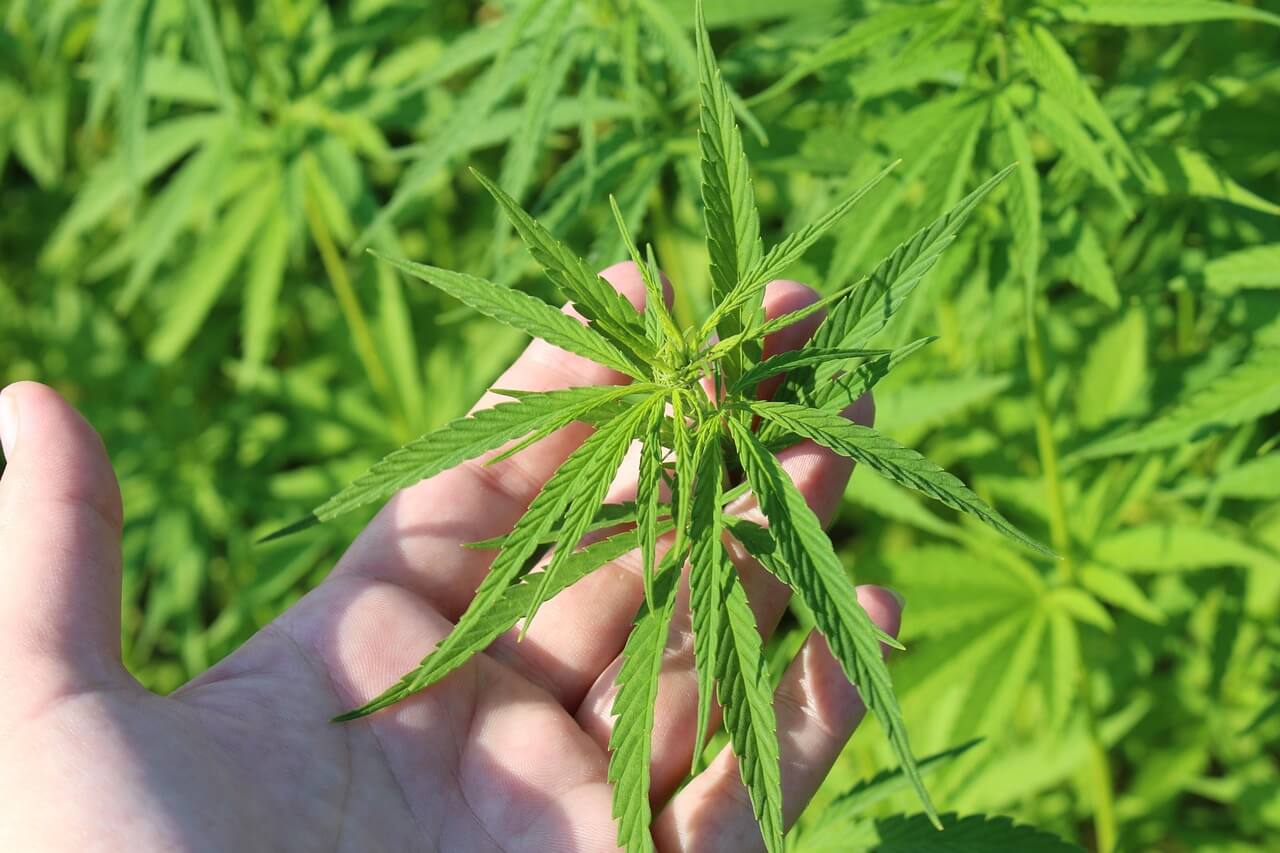
As you can see, preparing an outdoor cannabis crop requires attention to multiple factors, from the location of the crop and the chosen substrate to aspects such as the selection of genetics or pest prevention. By following these tips, you will be able to enjoy an abundant and quality harvest, while connecting with nature and learning about the fascinating world of outdoor cultivation.
Happy harvest!
